
Mood Ring
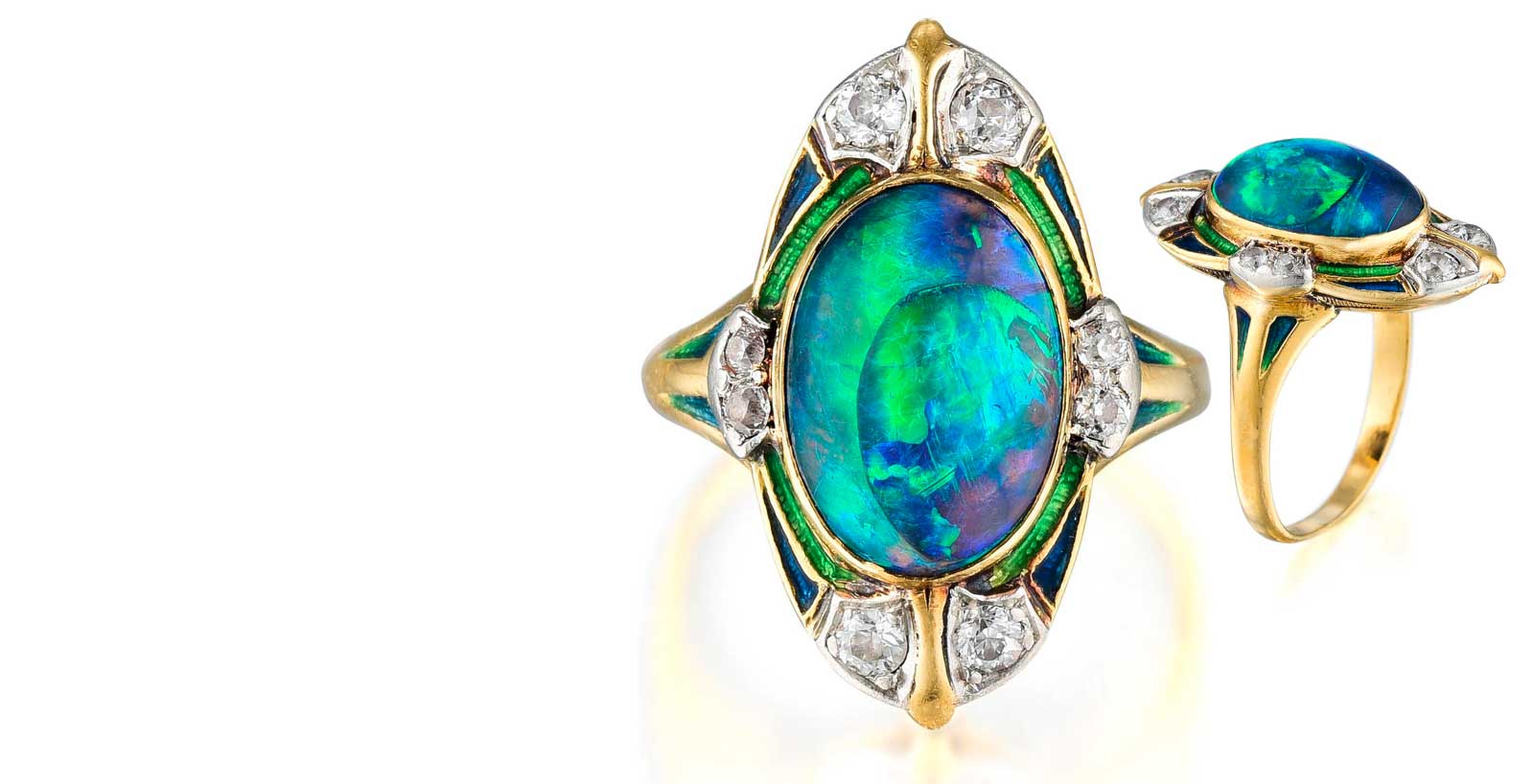
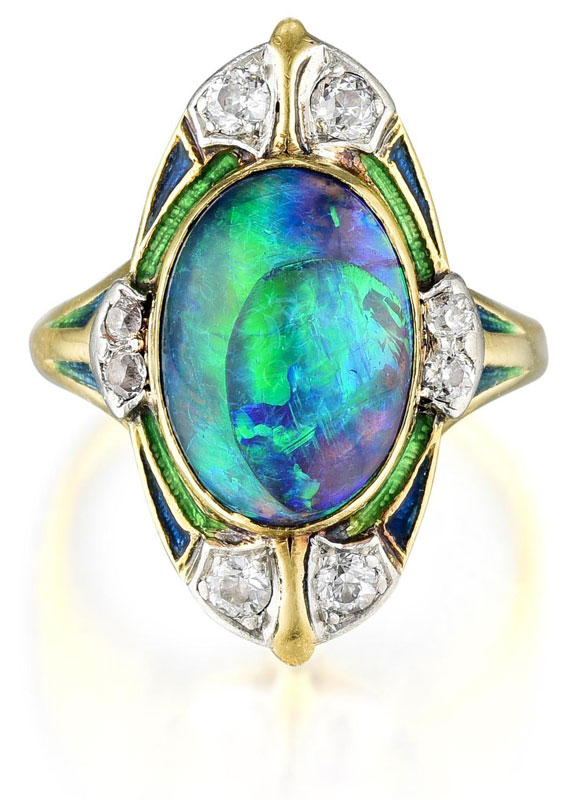
Mood Ring
The impeccable provenance of this opal and diamond ring is just one of its many attributes. Designed by Louis Comfort Tiffany around the turn of the last century, the elegant ring features a fine black opal weighing approximately 2.20 carats. Echoes of the dominant blues and greens of the opal are found in the delicate enamel work that forms part of the 18k gold frame. The ring is further enhanced by eight old European diamonds. Though their total weight is just 0.40 carat, they offer the perfect complement to the rich tones of the opal. The ring is signed “Tiffany & Co.”, and is stamped 18k with a maker’s mark and an identifying number.
Though Louis Comfort Tiffany’s jewelry output was small in comparison with his much better known stained glass lamps, they share an aesthetic. In the case of this ring, the color palette and the shifting tones inherent in opal are strikingly similar to the lamps. The ring is a quintessential work of the Art Nouveau period, with its soft, feminine lines, and a focus on color and form rather than intrinsically valuable materials. Tiffany referred to his work in this medium as “art jewelry.”
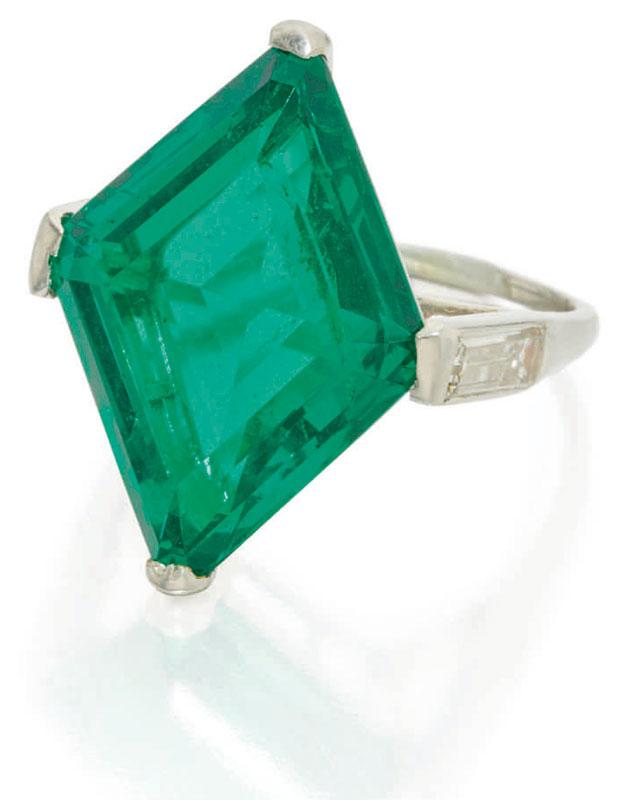
Green with Envy
Emerald and diamond ring, $1,215,000
Sotheby’s, New York
October 17, 2018
Color, one of the most elusive qualities in the gem mineral world, is the hallmark of a truly fine colored gemstone. One of the best examples ever to come to auction was this 10.68 step-cut, lozenge-shaped Colombian emerald sold at Sotheby’s for $1,215,000, more than double the high estimate. The stone was set in its original 1930s platinum mounting, with baguette diamonds weighing .90 carat on the shank. While the stone likely owed its unusual shape to the cutter’s desire to trim away undesirable parts of the rough while maintaining as much weight as possible, it is a remarkably elegant emerald, and one that appealed to jewelry collectors, as well as colored gemstone connoisseurs.
The deeply saturated emerald was singularly clear and clean, qualities rarely found in even the finest emeralds. The lack of inclusions, known as jardins, or silk, in the jargon of the gemstone trade, generally indicate a certain amount of acceptable internal flaws but this stone had virtually none. According to Kendall Reed, Sotheby’s jewelry expert for this sale, “This was a clear, clean crystal. The clarity was very high, it was almost as clear as a diamond.” The richness of the color marked it as Colombian, considered the finest of emerald sources. The size was also remarkable. “Emeralds over five carats are rare,” she added, “and this one, over ten carats is extremely rare.” Because the stone was not very deep in volume, the weight was more spread out, making it appear even larger than its 10.68 carats. The lack of depth reinforces the richness of the color, which was evenly saturated throughout the stone. Interest in the emerald was quite high but in the end it came down to the usual suspects, two determined bidders, one in the room, the other on the phone.
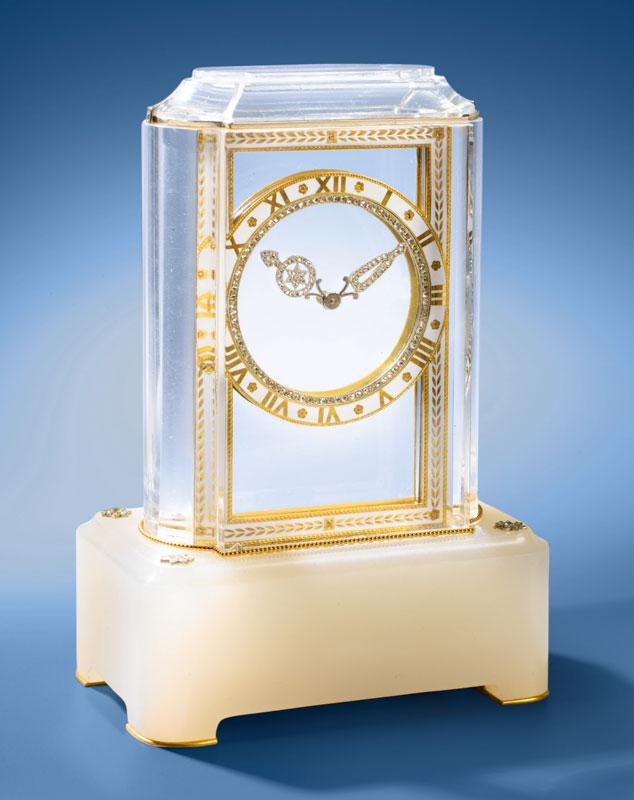
Now you see it…
Cartier Mystery Clock, $591,905
Sotheby’s, Paris
October 11, 2018
A rare, exquisite mystery clock by Cartier, circa 1930s made a spectacular appearance at Sotheby’s Paris jewelry sale, and earned $591,905. Superlatives cannot capture the unique beauty and technical wizardry that went into the making of this clock, one of only eighty made by Cartier since the first model appeared in 1912. Dubbed the “Model A” by Cartier, the clock is made up entirely of gemstone materials, starting with the white chalcedony base, outlined with gold trim. The entire clock is carved from transparent rock crystal. The hands are set with diamonds and point toward a white enamel bezel depicting the Roman numerals of the clock dial. The mystery, of course, relates to the apparent absence of any way for the hands to move around the face as time ticks by. Even knowing the secret of how these clocks work does not detract from their elegant and other-worldly appearance. Spoiler alert: The rock crystal is cut in half and then hollowed out to make space for the clock face and hands. The hands are attached to transparent circles that move within the bezel, which is itself connected to enamel and gold columns. The columns connect to the chalcedony base where the mechanism is tucked away, out of sight.
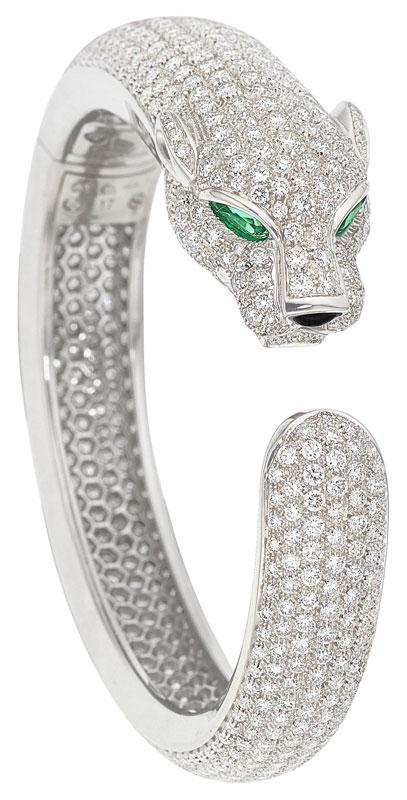
The Cat’s Meow
Cartier diamond bracelet, $137,500
Heritage, Beverly Hills
October 1, 2018
From the tip of its black onyx nose to its emerald green eyes, this panther exudes fierceness. The remarkable bracelet by Cartier France depicts its classic panther design formed entirely in diamonds set in white gold. The diamonds are pavé set, creating an overall carpet of brilliance. The myriad diamonds weigh a total of 15.74 carats. The emeralds are faceted and cut into elongated pear shapes to emulate the piercing gaze of a real wildcat. The shape of the face is outlined with white gold, further demarcating the feline grace of the beast. This bangle features a remarkable hinge that permits the head to swivel, allowing the bracelet to be slipped on and then secured on the wrist. It is ironic that in nature, a panther appears to be all black but upon close inspection, one can see the dotted pattern on its skin.
The first Cartier panther design appeared in 1914 on a wristwatch. The motif has been used on a variety of jewelry items, perhaps the best-known design being a brooch commissioned for the Duchess of Windsor. The firm continues to make panther motif jewelry including this particular bracelet. If anyone doubts there are great buys to be had at auction, just check out Cartier’s website where a contemporary version of the same bracelet may be had for a hefty $230,000.




























